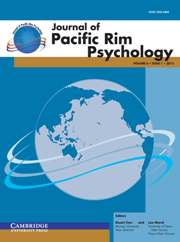Article contents
Living on the Ring of Fire: Perspectives on Managing Natural Hazard Risk in Pacific Rim Countries
Published online by Cambridge University Press: 23 February 2012
Abstract
From the perspective of studying natural hazards, the peace and tranquillity that might be expected from a literal translation of its name does not always capture the reality of life for communities on the Pacific Rim. This reality is more readily discerned in its alter ego: the Ring of Fire. The latter leaves one in less doubt as to the hazardous circumstances likely to prevail in this region. In addition to the hazards posed by the numerous volcanoes that resulted in the ‘Ring of Fire’ appellation, communities situated around the Pacific Rim also have to contend with earthquakes, tsunami, storms, cyclones/typhoons, flood and bushfire. To this list of acute events can be added hazards of a chronic nature such as salinity, environmental degradation and sea-level rise that represent growing threats to many Pacific Rim countries. The region also faces increased risk from health-related hazards. Sydney, for example, has been identified as a pandemic hotspot as a result of it being a hub linking the airways of Asia and the United States.
- Type
- Guest Editorial
- Information
- Copyright
- Copyright © Cambridge University Press 2009
- 4
- Cited by




